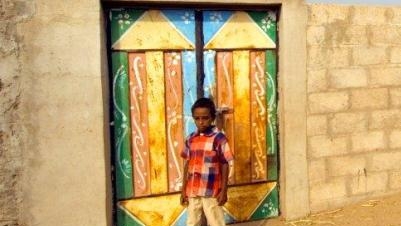Challenge
Djibouti is one of the poorest countries in the world, where roughly 74 percent live below the poverty line and 42.2 percent suffer from extreme poverty. The country also has some of the lowest enrollment (39 percent) and illiteracy rates (70 percent) in the world, with women comprising 85 percent of the illiterate population. Although some encouraging progress had been achieved under Projet d’Amélioration d’Accès aux Écoles (PAAE I), Djibouti’s education system continued to face serious challenges that called into question the country’s ability to achieve the education-related Millennium Development Goals (MDGs) by 2015. Despite the government’s effort to expand access, demand still outpaced supply, and the quality of education continued to face persistent issues, such as a shortage of qualified teachers, outdated pedagogic modules, insufficient numbers of textbooks, high repetition and dropout rates, and overcrowded classrooms. Finally, in spite of the substantial government budget allocation to the education sector (6.3 percent of gross domestic product (GDP) in 2004), there was little financial margin to improve education quality.
Solution
The objectives of the Second School Access and Improvement Project were increasing access to basic education equitably, improving the quality of education and increasing the efficiency of the education system, which were integral parts of the Government of Djibouti’s master plan. The project was divided into three main components with the following objectives: 1) increase student enrollment and retention with a special focus on girls and children with special needs, and provide adequate facilities for them to complete primary education; 2) improve the quality of education service provision so that it would be conducive to quality learning and teaching, and help reduce repetition and dropout rates; and 3) improve the management of the education system for a more efficient utilization of sector resources.
Results
Equitable access to basic education has been broadly achieved. Between 2006 and 2011, the project expanded school access by adding and equipping 102 classrooms in both urban and rural areas, increasing access to primary schools and benefitting more than 7,000 children, including approximately 3,300 girls.
Increased capacity to provide in-service teacher training. The project contributed to training a pool of 20 qualified trainers in charge of training teachers at the central and regional levels, as well as a pool of 24 teacher-trainers and pedagogical advisors in a skills-based approach to teaching and learning. Between 2009 and 2011, 95 percent of teachers had received continuing training, exceeding the target of 90 percent, and 100 percent of school directors and pedagogical advisors participated in additional training on a regular and annual basis. A total of about 3,731 school staff (3,296 teachers, 271 school directors and 164 pedagogical advisors) was trained.
Improved teacher monitoring. The project financed the provision of eight vehicles for inspectorates. The vehicles enabled inspectors to increase the frequency of school visits from one visit per month to three to four visits per month, and conduct a more regular and frequent monitoring of teacher attendance.
Djibouti has the capacity to produce good quality textbooks. The project contributed to transforming the National Education Research and Information Production Center (Centre de Recherche, d’Information, et de Production pour l’Education Nationale - CRIPEN) into an autonomous entity that is now producing primary textbooks adapted to the local context.
Ministry of National and Higher Education (MNHE) is now on track to move towards an organizational change. The MNHE acknowledged that results of an institutional audit served as a catalyst to move toward necessary organizational change, especially as the ministry has been in a process of decentralization.
Bank Group Contribution
IDA provided US$10 million for the second phase of the project, with the government providing an additional US$1 million.
Moving Forward
The PAAE was initially designed as a three-phase adaptable program loan (APL), and PAAE II achieved all but one of the triggers to move to the third phrase. However, as discussions for the preparation of PAAE III began, the 2009 Country Assistance Strategy (CAS) proposed to focus on the government’s new priority, which was the expansion of the technical education and vocational education and training (TVET) sector and secondary education. Furthermore, building on the lessons of PAAE II, it was clear that the next IDA-financed operation should have a greater focus on the management and sustainability of the education system through the reinforcement of the MNHE’s institutional capacity and structure. The next proposed IDA-financed operation, “Strengthening Institutional Capacity and Management of the Education System Project” (P123315) seeks to: (i) improve management and accountability through better planning, budgeting, monitoring and evaluation; (ii) establish a governance structure for the new TVET Directorate; (iii) improve the management and distribution of textbooks; and (iv) strengthen project management and reinforce the ministry’s maintenance unit.
Beneficiaries
The primary beneficiaries of this project were: (i) students in primary and middle school from urban, rural and impoverished areas, in particular, girls and children with special needs; (ii) teachers; (iii) administrative staff at the central and regional levels; (iv) school directors; (v) inspectors; and (vi) officials from the MNHE and other departments involved in the provision of education services such as the Personnel Training Center for National Education (Centre de formation des personnels de l’enseignement national, CFPEN) and the National Education Research and Information Production Center (Centre de recherche, d’information et de production pour l’éducation nationale, CRIPEN).

